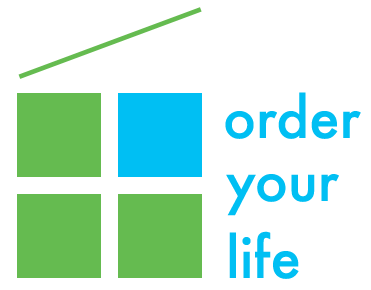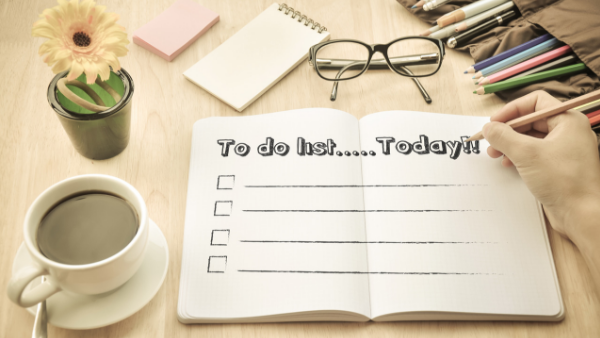Productivity consulting has always been an integral part of the organizing profession. Much of what we do as professional organizers not only helps our clients declutter and organize their physical space, but also enhances their ability to lead productive lives.
Productivity can mean different things to different people, but here is how some productivity consultant colleagues define it:
- “An intentional setting in which everyone can accomplish their work and enjoy their lives” – Barbara Hemphill, Productive Environment Network TM
- “Getting the important things done in an efficient manner” – Dawn George, Dawn George Organizing
- “Getting the desired results in the most effective and efficient way possible” – Debbie Rosement, Simply Placed
- “Doing the work that supports your goals and intentions as efficient and effectively as possible in an environment that supports your success and quality of life” – Ellen Faye, The Ellen Faye Organization
- “Achieve high priority goals and/or improve efficiency” – Heather Cocozza, Cocozza Organizing and Design, LLC
- “Producing what you want in life” – Casey Moore, Living Simply® Consulting, Inc.
Productivity consulting is such an important aspect of what we organizers do, that our professional association, NAPO, recently changed its name from the National Association of Professional Organizers to the National Association of Productivity and Organizing Professionals, to reflect this.
NAPO-WDC, my local Washington DC chapter, recently held a one day productivity summit for professional organizers which featured the organizing guru Julie Morgenstern, author of Time Management from the Inside Out, and her new book, Time to Parent: Organizing Your Life to Bring Out the Best in Your Child and You. What follows are my key takeaways from Julie’s session, “Making Work Work,” in which she outlined 6 main strategies to achieve greater flow and productivity, especially with time and task management.
Strategy #1 – Apply the WADE formula
Write it down
- Tasks can come from so many different places, but we can’t choose what it is more important unless it is all in one centralized location.
- Choose your favorite task app (mine is Wunderlist) or write it all down in one notebook or journal. No stickies everywhere allowed!
- Make sure you use an action verb in the task like Review, Send, Call, Email, Pay, Write, etc.
Add it up
- Put a time estimate next to each task, and be realistic! Time yourself doing a typical task to get the information you need.
Decide what you are going to do and when.
- Integrate your To Dos directly into your calendar.
- Ask yourself: “Is this the best use of my time?”
- Choose things that take the least amount of time and have the highest value of return against your goals.
- Break larger tasks into chunks.
Execute your plan
- A To Do that is not connected to your When is not going to get done.
Strategy #2 – Streamline your To Do list with the 4 Ds
Delete
- Are there tasks that don’t really have to be done? Are they just busy work? Would doing something else that takes less time produce the same result?
Delay
- This is not procrastinating. This means to reschedule a task until you can accomplish it more efficiently with necessary time or resources.
Diminish
- Are you making the task more than it has to be? Can you find a way to get it done smarter?
Delegate
- Is there someone else who can get the task done that would free you up to do higher value work?
Strategy #3 – Create a time map for the “legato” work
For the musically inclined, Julie differentiates work environments as “staccato” or ‘legato”. In this age of emails, texts and a constant barrage of information, we are living in a staccato work environment. All our tasks in tend to be reactive and done in short bursts of time. However, that means that the legato work, the work that takes deeper thinking, a slower pace and more time, like strategic planning, writing, research and design, often gets neglected. Julie suggest taking one hour a day for legato tasks. Here are a few ways to find that extra time.
- Break our screen addiction: get off Facebook, Instagram and other social media that eat up valuable time.
- Stop constantly checking email. Designate specific times each day to check it by setting an alarm, and only do it then.
- Stop multitasking. Research has shown that it takes four times longer to get something done when you switch between tasks, and it places extreme stress on the frontal cortex.
- Turn off all smart phone and computer notifications: these can be extremely distracting and result in multi-tasking and switching.
- Make email a legato task. Take time to process your emails fully during your designated email sessions. For any email that takes longer than 2 minutes, acknowledge receipt and set a time to respond.
Strategy #4 – End every day with a plan for tomorrow + 2
- At the end of each day, take about 30 minutes to evaluate the content and flow of your day, and to think ahead to the next two days.
- Take the time to prepare mentally and physically for the next day by reviewing your calendar and designated tasks.
- Ask yourself “what could derail me tomorrow?” and prepare for it if possible.
Strategy #5 – Practice selective perfectionism
- Define 3 levels of performance for the task – MAX/MOD/MIN or Maximum/Moderate/ Minimum. See Julie’s blog post here for her explanation and examples.
- Once you have defined the three levels, you have options.
- Right-size the task for the circumstances.
Strategy #6 – Stay in balance with PEP
Learn to recognize burnout and know when to stop and renew. Rather than stealing mini-breaks all day long with things like social media, allow yourself a full rest time by being with friends, engaging in hobbies, and just having fun. Julie refers to this as PEP:
- Physical activities
- Escapes
- People
Julie summed up her excellent presentation with the following quote by Carl Sandburg. This pretty much says it all!
“Time is the coin of your life. It is the only coin you have. Only you can determine how it will be spent. “


